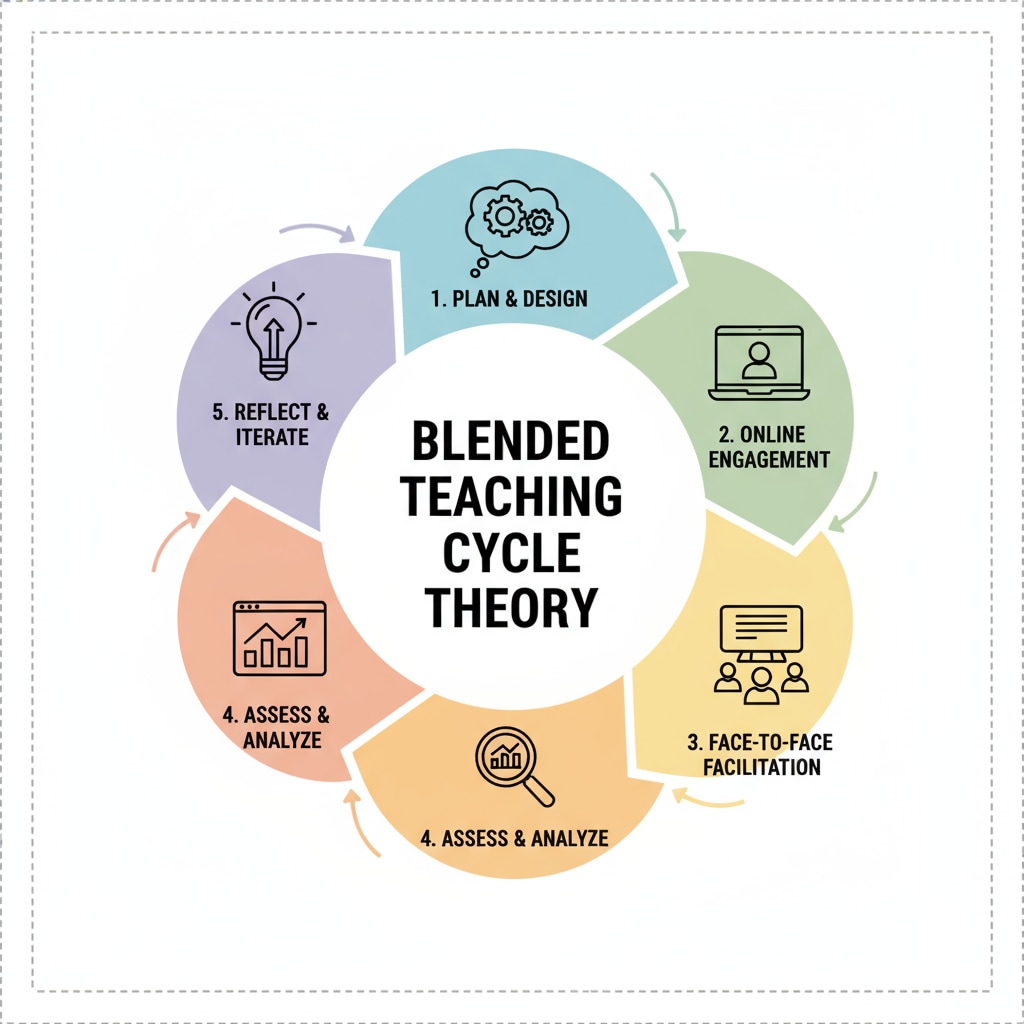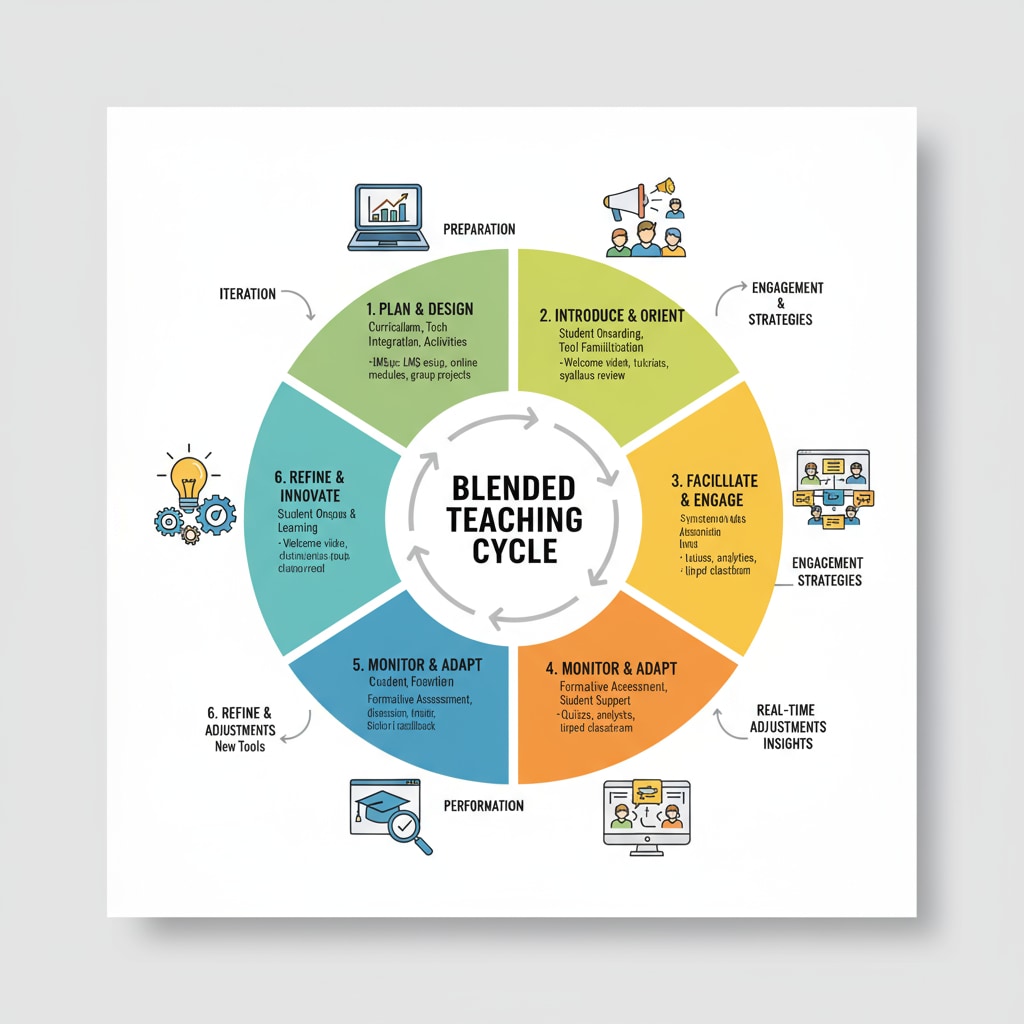The Blended Teaching Cycle Theory is a remarkable concept in the realm of educational models, integrating the elements of instruction and facilitation. This theory presents a five-step cyclic model that artfully combines traditional instructional teaching with facilitative learning, offering a structured yet adaptable framework for K12 education. Let’s delve deeper into this theory, exploring its theoretical underpinnings, implementation steps, application value, and potential limitations.

Theoretical Foundations of the Blended Teaching Cycle Theory
The Blended Teaching Cycle Theory draws from multiple educational theories. It acknowledges the importance of direct instruction, where teachers transmit knowledge and skills to students. At the same time, it also emphasizes the significance of facilitative learning, which encourages students to take an active role in constructing their understanding. For example, constructivist theories, as explained on Wikipedia, highlight the idea that learners build knowledge through their experiences and interactions. This forms the basis for the facilitative aspect of the Blended Teaching Cycle Theory.
Implementation Steps of the Blended Teaching Cycle Theory
The five-step cyclic model of this theory provides a clear roadmap for educators. The first step often involves setting clear learning objectives. Teachers need to define what students are expected to learn. In the second step, direct instruction takes place. Here, teachers present the necessary information and demonstrate key skills. The third step is facilitation, where teachers create opportunities for students to explore, discuss, and apply what they’ve learned. For instance, group projects or discussions can be used. The fourth step is assessment, which helps teachers gauge students’ understanding. Finally, the cycle concludes with reflection, where both teachers and students analyze the learning process and results. This reflection can inform future teaching and learning activities.

The application value of the Blended Teaching Cycle Theory is significant. It helps strike a balance between teacher-led instruction and student-centered learning. By incorporating both instruction and facilitation, it caters to different learning styles. Some students may benefit from direct instruction, while others thrive in a facilitative environment. Moreover, this theory promotes active engagement among students, enhancing their critical thinking and problem-solving abilities. As a result, it can lead to improved academic performance and better overall educational outcomes.
However, like any educational theory, the Blended Teaching Cycle Theory also has its limitations. Implementing this theory requires significant teacher training and expertise. Teachers need to be proficient in both instructional and facilitative techniques. Additionally, it can be challenging to manage the time effectively across the five steps, especially in a traditional classroom setting with fixed schedules. In addition, the resources required for facilitative learning, such as materials for group activities, may not always be readily available.
Readability guidance: This article uses short paragraphs to present ideas clearly. Each section focuses on a key aspect of the Blended Teaching Cycle Theory. Lists and transitions are used to enhance readability and logical flow. The goal is to provide a comprehensive understanding of this educational theory for educators and those interested in educational models.


